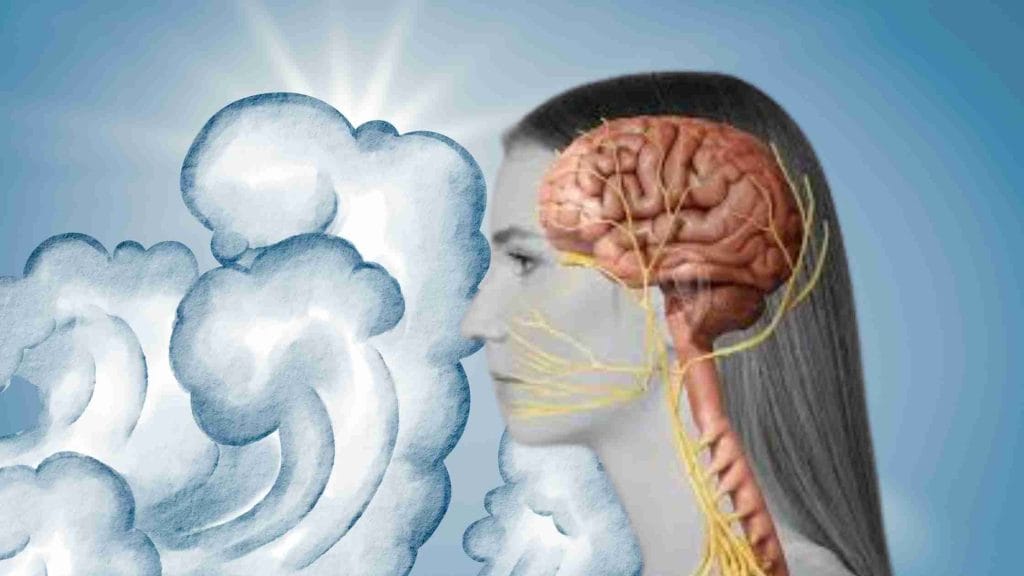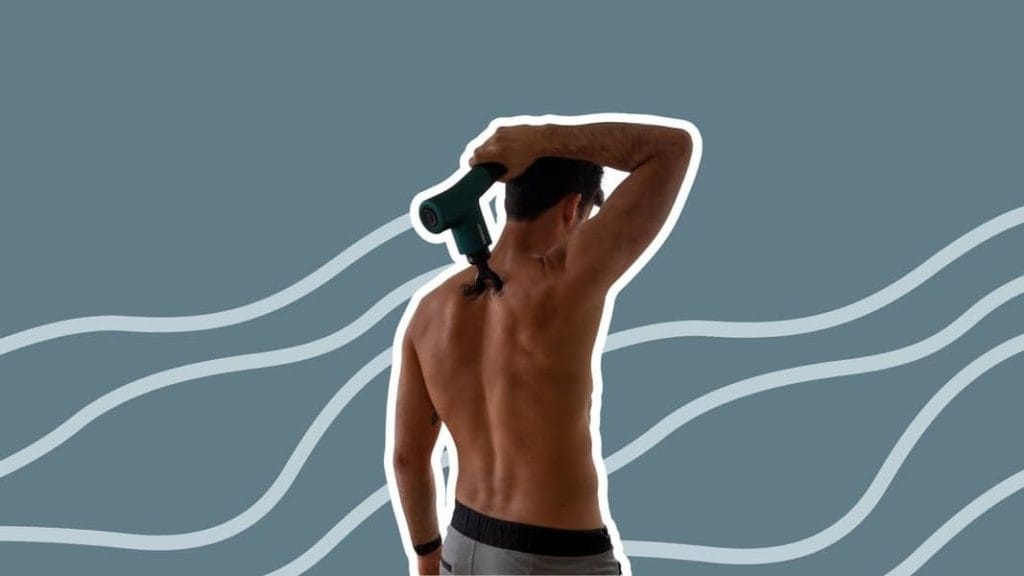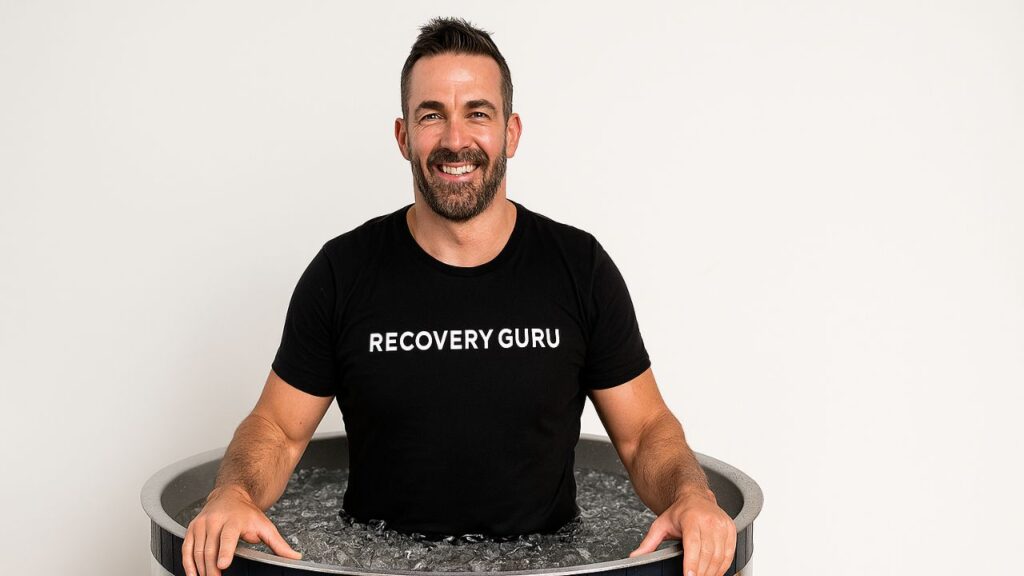What Is The Vagus Nerve And How To Activate It?
We include links to products we think are useful for our readers. If you click and buy a product through one of the affiliate links on this page, we may earn a small commission.

As humans, we’ve been aware of the ‘mind-body’ connection for centuries – since 1872 with Alexander Bain’s Mind and Body, and even before then. We know that our gut affects our mind, our mood affects our physical capabilities, and a late night of drinking can lead to some serious hanxiety.
But what’s responsible for this connection between the mind and body? It’s not some whimsical, intangible connection that runs through the air like Bluetooth. It’s the Vagus nerve – a powerful nerve that runs from your brain to your abdominal organs, connecting you to your body and giving you access to its various functions.
Understanding exactly what this nerve does and how to activate it can help you feel your best and access the full range of benefits that come from a healthy Vagus nerve. More people are hearing about the vagus nerve and wondering where is the vagus nerve, how to activate the vagus nerve and what to look out for with symptoms of low vagal tone.
Let’s dive deeper into what the Vagus nerve is, how it works, and some tips on how to stimulate it with taking ice baths, exercise, humming and chanting, breathwork, yoga and more.
What is the Vagus Nerve?
Wer’re here to talk about the Vagus nerve – but before it was named Vagus, we simply knew it as the tenth cranial nerve. Scientists have known about the 12 cranial nerves since the 1600s. But the nerve itself isn’t what makes it special.
In 1921, physiologist Otto Loewi discovered something he called ‘Vagusstoff.’ He ran an experiment by stimulating the Vagus nerve of frogs; the result was discovering a neurotransmitter, acetylcholine, which is present in the Vagus nerve. Loewi realized that this neurotransmitter could be used to help regulate heart rate and respiration.
By discovering chemical neurotransmission through the Vagus nerve, Loewi revolutionized our understanding of how nerve signals are transmitted between cells. His research laid the foundation for further investigations into the intricate workings of the nervous system and the role of neurotransmitters in physiological processes.
What is the Vagus Nerve?
How the Vagus Nerve Works
The Vagus nerve is a cranial nerve, which means it starts in the brain and travels down through the body. It’s responsible for controlling many of our involuntary bodily functions like breathing, digestion, swallowing, sweating – even talking!
It’s also known as one of the two main parasympathetic nerves – meaning it works alongside your sympathetic nervous system (the other being the sacral nerve) to regulate your fight-or-flight response. This helps keep you calm and relaxed during stressful moments by lowering your heart rate and blood pressure.
The Vagus nerve is also involved in the production of neurotransmitters like acetylcholine, dopamine, serotonin, and GABA, all chemicals that play vital roles in controlling your moods, emotions, and overall wellbeing.
Why It’s Good To Stimulate the Vagus Nerve
So, we know the crucial function that the Vagus nerve serves – but if it’s responsible for so many of our involuntary processes, why do we need to stimulate it?
Stimulating the Vagus nerve can help you unlock its full potential and enable your body to access a range of benefits. Let’s take a look at some of the most important benefits you can get from stimulating your Vagus nerve:
Relax, Unwind, and Reduce Stress
When you stimulate your Vagus nerve, it activates the parasympathetic nervous system – also known as “rest and digest” mode. This helps counterbalance the fight or flight response from the sympathetic nervous system. So by giving your Vagus nerve some attention, you can promote relaxation, reduce stress, and foster a sense of calmness.
Engaging the Vagus nerve can also enhance other vital bodily functions, such as improving digestion, lowering heart rate, and regulating mood. Techniques to stimulate the Vagus nerve include deep breathing exercises, cold exposure, meditation, and even humming or singing. Incorporating these practices into your daily routine can significantly improve your overall well-being and resilience to stress. By focusing on your Vagus nerve, you not only nurture your body’s ability to recover and relax but also create a foundation for better mental and physical health.
Improve Your Mood
The Vagus nerve connects to key brain regions responsible for managing our mood (such as amygdala and prefrontal cortex). When stimulated, it helps release neurotransmitters like serotonin and norepinephrine which are involved in mood regulation. That’s why researchers are exploring how Vagus nerve stimulation might help treat depression and anxiety disorders.
Studies suggest that Vagus nerve stimulation (VNS) can have a profound impact on mental health by modulating the brain’s chemistry and improving mood stability. This non-invasive technique is gaining attention as a potential treatment for individuals who do not respond well to traditional therapies for depression and anxiety. By harnessing the power of VNS, there is potential for developing innovative approaches to mental health treatment, offering hope for those seeking alternative or complementary options to manage their symptoms and enhance their overall quality of life.
Combat Inflammation
Vagus nerve stimulation has been found to have remarkable anti-inflammatory effects in our bodies by reducing pro-inflammatory cytokines production. It could play a vital role in treating chronic inflammation-related conditions such as rheumatoid arthritis, inflammatory bowel disease or even certain neurological disorders.
By modulating the immune response, Vagus nerve stimulation (VNS) helps in alleviating the symptoms associated with these conditions and potentially slows their progression. Research has shown that activating the Vagus nerve can reduce inflammation and improve disease outcomes, offering a promising therapeutic avenue. For individuals suffering from chronic inflammation, VNS represents a novel approach that targets the root causes of inflammation rather than merely addressing symptoms, paving the way for more effective and holistic treatment options.
Enhance Digestive Function
Our digestion relies heavily on the contributions of the Vagus nerve! Stimulating it improves gastrointestinal motility (the movement of food through our digestive tract), enhances enzyme secretion needed for breaking down food particles effectively AND increases nutrient absorption.
By ensuring efficient movement of food and optimal enzyme production, the Vagus nerve plays a critical role in maintaining a healthy digestive system. This improved digestive function not only helps prevent common issues like constipation and bloating but also maximizes the absorption of essential nutrients, contributing to overall health and vitality. Moreover, a well-functioning digestive system supports the body’s immune response and can positively influence mood and energy levels, showcasing the far-reaching benefits of a healthy Vagus nerve.
Support Heart Health
Your heart benefits from stimulating this incredible helper nerve. By regulating heart rate and reducing excessive sympathetic activity, it may help manage conditions like arrhythmias, heart failure, and hypertension.
The Vagus nerve’s influence on the heart promotes a balanced and steady heartbeat, potentially reducing the risk of irregular rhythms. In cases of heart failure, Vagus nerve stimulation can enhance heart function and improve overall cardiovascular health. Additionally, by modulating the autonomic nervous system, it helps lower blood pressure, offering a natural method for managing hypertension. This holistic approach underscores the profound impact of the Vagus nerve on cardiovascular well-being, highlighting its potential as a therapeutic target for various heart conditions.
Boost Cognitive Function
The Vagus nerve connects to areas of the brain responsible for cognitive processes such as memory and attention. Studies have shown that stimulating the Vagus nerve can improve cognitive function and even enhance memory formation.
Clearly, the Vagus nerve is a powerful and important part of our body – one that can only benefit us further through knowing exactly how to activate and stimulate it. But first, let’s talk about vagal tone.
Why Is Low Vagal Tone Bad?
Vagal tone is the measure of how well your Vagus nerve works. It’s measured and determined by the heart rate, the breathing rate, and heart rate variability (HRV).
Our minds should always be in tune with our bodies, but low vagal tone indicates the opposite – a weakened connection between your brain and body, which can lead to issues such as digestive problems, fatigue, anxiety, depression, and even heart disease.
Low vagal tone has a number of telling symptoms, such as:
Difficulty concentrating and focusing on tasks
Low energy levels
Poor appetite or digestive issues (bloating, constipation, etc.)
Anxiety and depression
High blood pressure
Hyperactive heart rate or palpitations.
Luckily, there are ways to stimulate your Vagus nerve and increase your vagal tone.
Ways To Activate the Vagus Nerve
‘Activating the Vagus nerve’ sounds a little dramatic, but it’s not a complicated process. A few basic techniques are all you need to get your Vagus nerve working at full power.
Simple practices like deep breathing, meditation, and yoga can effectively stimulate the Vagus nerve. Incorporating cold exposure, such as taking cold showers or splashing your face with cold water, can also activate it. Singing, humming, and even gargling are easy ways to give your Vagus nerve a gentle nudge. Regular practice of these techniques can lead to significant benefits for your overall health and well-being, making Vagus nerve stimulation accessible to everyone.
Cold Exposure

Cold exposure is exactly what it sounds like – exposing your body to a cold temperature. For example, you can take a cold shower or bath, submerge yourself in ice-cold water for 30 seconds or so, or even just put an ice cube on your face and neck for up to two minutes.
Like many of the most effective therapeutic techniques we use today, cold exposure has been around for centuries and centuries; it dates back to records written by Hippocrates in the fourth century BC. It’s simple, but it works.
How It Works
Exposing yourself to cold water can activate the Vagus nerve through a fascinating physiological response called the “diving reflex” or “mammalian diving reflex.” This inborn survival mechanism kicks in when our body encounters cold water, especially during submersion.
When triggered by the diving reflex, activating your Vagus nerve induces calmness, relaxation, energy conservation while lowering heart rate, blood pressure levels as well as oxygen consumption–all contributing significantly towards an enhanced sense of well-being.
Breathwork
We find instances of breathwork across a broad spectrum of wellness practices, religious and spiritual traditions, and even mental health therapies. Breathwork has a few different forms, but it generally involves manipulating the breath to achieve certain states of consciousness or regulate emotions.
The practice of breath work primarily activates your Vagus nerve through two mechanisms:
The breathing techniques themselves stimulate sensory receptors in your nose that send signals to the brainstem; this in turn triggers the Vagus nerve
Deep breaths slow down your heart rate and relax your body – both are signs of increased parasympathetic activity which is activated by stimulating the Vagus nerve.
To do your own breathwork, there are a couple of key exercises health professionals usually recommend. The first is called the 4-7-8 breath:
Start by taking a deep breath through your nose while counting to four.
Hold your breath for seven counts.
Slowly exhale through your mouth, counting up to eight.
Repeat this cycle for two minutes or until you feel relaxed.
You can also try alternate nostril breathing – it’s both calming and energizing at the same time:
Begin with closing one nostril with your finger and inhale deeply through the other nostril, then switch sides and repeat on that side.
After each inhalation, pause for a few seconds before exhaling.
Keep alternating nostrils and breathing rhythmically.
It might feel silly at first, but the effects are undeniable – breathwork is an effective way to stimulate your Vagus nerve and activate its calming benefits.
Humming and Chanting
There’s a reason why some of the most peaceful spiritual groups around the world use humming and chanting as part of their practice – it’s incredibly effective for activating the Vagus nerve, helping them to maintain a state of tranquility and relaxation.
When you hum or chant, air passes through your vocal folds and creates vibrations in the throat area. This triggers sensory receptors that send signals to the brain via cranial nerves, one of which is the Vagus nerve. The resulting stimulation activates parasympathetic activity – a state of calmness and relaxation – while putting your mind at ease.
Humming also has other benefits such as relieving stress, improving sleep quality, aiding digestion (which can be associated with low Vagal tone) as well as encouraging positive emotions like joy and contentment.
Exercise and Yoga
Developed in North India over 5000 years ago, yoga combines mental, spiritual, and physical elements to create a holistic system of health and wellness.
The poses (or asanas) are designed to increase strength, flexibility, balance and concentration while engaging both the body and mind. The practice of yoga can also stimulate your Vagus nerve by activating sensory receptors in the muscles, joints and connective tissues – these send signals back to your brainstem which then triggers vagal activity.
Other forms of exercise can also be beneficial for stimulating your Vagus nerve; anything that gets you moving is helpful for increasing parasympathetic activity while providing a sense of mental well-being. Opt for activities like walking or running, swimming, cycling, or even dancing – whatever you like best.
Myofascial Release

Myofascial release is a type of bodywork that uses manual pressure to penetrate deep into the fascia – the tough connective tissue that surrounds muscles, bones and organs. By releasing tension in these areas, myofascial release helps reduce pain and improve range of motion while also stimulating your Vagus nerve.
The process works by activating sensory receptors in the fascia which then send signals to your brainstem via cranial nerves (one of which is the Vagus nerve). This triggers parasympathetic activity throughout your body resulting in increased relaxation and improved cognitive functioning.
Read Also: Best Massage Guns of 2023
So, how can you incorporate myofascial release into your routine?
Start by finding a qualified practitioner who is experienced in the area.
Have them assess any areas of tension or pain and they’ll be able to identify which muscles need the most attention.
Be sure to communicate with your therapist about how much pressure you’re comfortable with, as it can get quite intense at times.
After each session, take time for yourself and focus on breathing slowly while paying close attention to any sensations in your body – this helps facilitate relaxation and encourages Vagus nerve activation.
Using one, a couple, or a mix of the strategies outlined above can help you increase your vagal tone and activate the Vagus nerve. As a result, you should experience improved physical and mental wellbeing with reduced levels of anxiety and depression.
Remember – it’s important to listen to your body when implementing any of these techniques; if at any point something doesn’t feel right or comfortable for you, stop and recalibrate.
Signs of Vagus Nerve Issues
Wondering whether you need to worry about your Vagus nerve?
If you’re experiencing any of the symptoms listed below, it might be worth looking into:
Digestive issues (bloating, constipation, nausea). The Vagus nerve is heavily involved in controlling the digestive process, so any issues here could be sign of a problem.
Feeling of discomfort or tightness in your throat area. Your Vagus nerve is responsible for controlling the muscles in your throat – but a dysfunctional nerve can lead to tension or tightness in this area.
Heart palpitations, lightheadedness or dizziness. When your Vagus nerve is not functioning properly, it can affect the heart rate and blood pressure which leads to symptoms like these.
Difficulty breathing or swallowing – again, this is linked in with the throat muscles.
Mood fluctuations – feeling anxious or depressed are also signs of an under active Vagus nerve as it’s responsible for regulating our emotions and calming down our nervous system.
Frequently Asked Questions
The vagus nerve is a crucial part of the parasympathetic nervous system, impacting various bodily functions.
The Vagus nerve influences heart rate by sending signals to slow it down during periods of relaxation. In the digestive system, it promotes the secretion of digestive enzymes and supports gut motility, ensuring smooth digestion. Additionally, it helps regulate breathing patterns and promotes relaxation by reducing the fight-or-flight response. Given its extensive reach and impact, the Vagus nerve is integral to maintaining homeostasis and overall health.
Benefits include reduced stress, improved digestion, lower heart rate, and enhanced mood.
Vagus nerve stimulation enhances gastrointestinal motility and promotes the secretion of digestive enzymes, which aids in more efficient digestion and nutrient absorption. Lowering heart rate is another notable benefit, as it contributes to cardiovascular health and helps manage conditions like hypertension.
Techniques to stimulate the Vagus nerve include deep and slow breathing, cold exposure, singing or humming, and meditation. Deep breathing exercises, such as diaphragmatic breathing or paced breathing, activate the Vagus nerve by promoting relaxation and reducing stress.
Cold exposure, whether through cold showers, splashing cold water on the face, or immersing oneself in cold water, stimulates the Vagus nerve’s response to environmental stimuli.
Singing or humming engages the Vagus nerve through the vibrations created in the vocal cords, while meditation promotes relaxation and activates the parasympathetic nervous system, including the Vagus nerve.
Yes, stimulating the Vagus nerve can help reduce anxiety by promoting relaxation and calming the nervous system. When the Vagus nerve is activated, it triggers the parasympathetic nervous system, also known as the “rest and digest” response, which counteracts the body’s stress response.
By promoting relaxation and reducing physiological arousal, Vagus nerve stimulation can alleviate symptoms of anxiety. This may include lowering heart rate, reducing muscle tension, and decreasing the production of stress hormones like cortisol.
Incorporating techniques that stimulate the Vagus nerve, such as deep breathing, meditation, and cold exposure, into your daily routine can help manage anxiety and promote a greater sense of calm and well-being.
Generally, stimulating the Vagus nerve is safe for most individuals, but those with specific medical conditions should consult a healthcare professional before attempting any techniques.
While techniques such as deep breathing, meditation, and cold exposure are generally well-tolerated, they may not be suitable for everyone, especially those with certain medical conditions or those who are pregnant.
Individuals with a history of cardiovascular issues, epilepsy, or other neurological disorders should exercise caution and seek guidance from a healthcare provider before engaging in Vagus nerve stimulation techniques.
Regular practice, like daily or several times a week, is beneficial for cumulative effects.
Consistency is key when it comes to stimulating the Vagus nerve. Engaging in these practices daily or several times a week can help strengthen the connection between the Vagus nerve and various bodily functions, promoting long-term health benefits.
By incorporating Vagus nerve stimulation into your routine on a regular basis, you can maximize its effects on stress reduction, digestion, heart rate regulation, and overall well-being. Over time, you may notice improvements in mood, relaxation, and resilience to stressors, making regular practice an essential component of your holistic health regimen.
Yes, it can help improve sleep quality by reducing stress and promoting relaxation.
By reducing physiological arousal and lowering levels of stress hormones like cortisol, Vagus nerve stimulation can help quiet the mind and prepare the body for restful sleep. Additionally, Vagus nerve stimulation techniques such as deep breathing, meditation, and cold exposure can help alleviate tension and promote relaxation, making it easier to transition into sleep.
Incorporating these techniques into your bedtime routine can help calm the nervous system, reduce racing thoughts, and promote a sense of peace and tranquility, ultimately improving sleep quality and overall well-being.
Final Thoughts
These symptoms do, of course, overlap with other conditions. It’s always best to speak with a qualified health professional before making any changes or trying out new treatments.
And remember – the Vagus nerve is a two-way street. The body affects the mind; the mind affects the body; the pattern continues. With techniques that target both the mind and the body, you can reach a balanced homeostasis that leads to holistic health and well-being.





